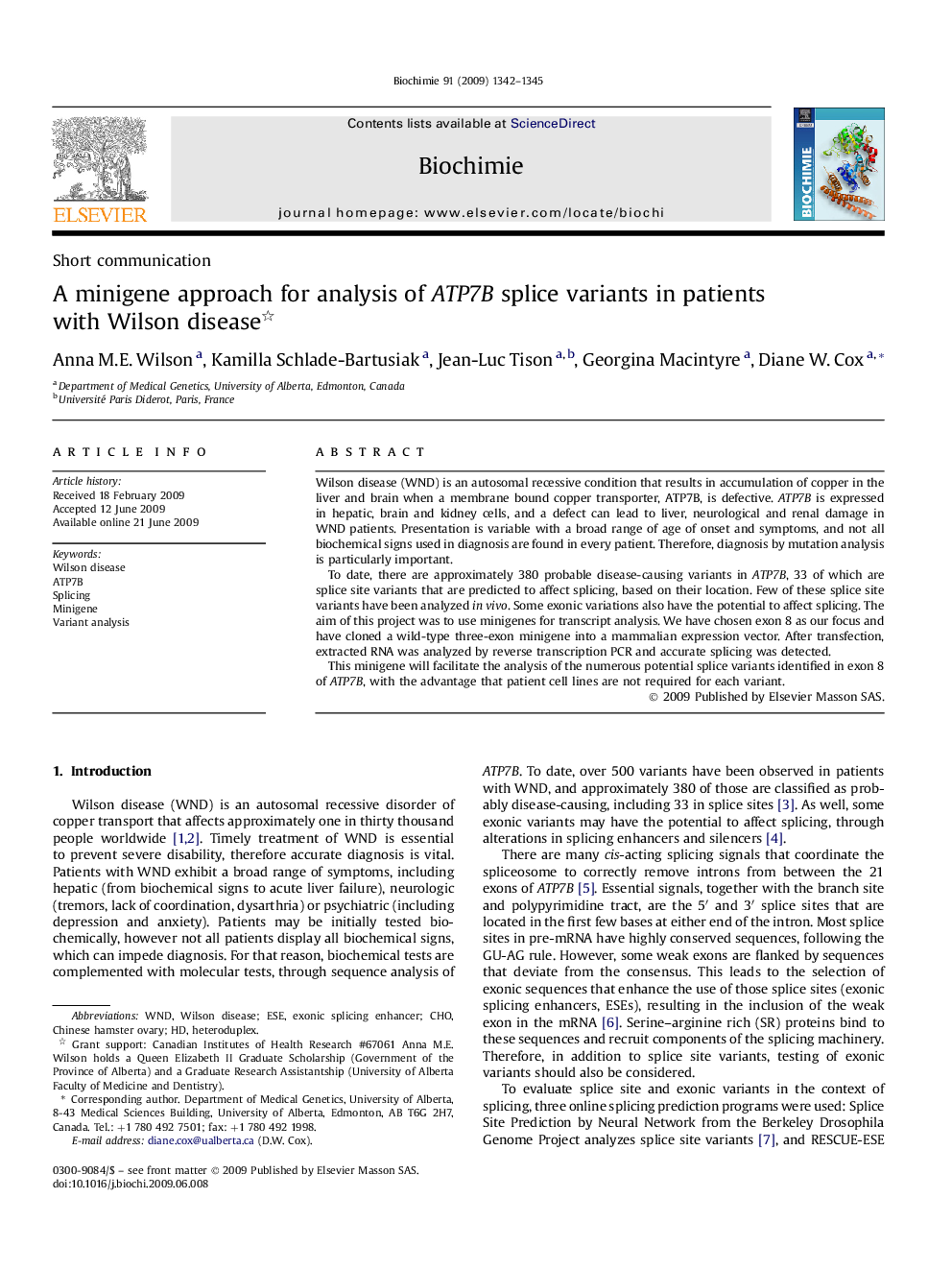| Article ID | Journal | Published Year | Pages | File Type |
|---|---|---|---|---|
| 1952411 | Biochimie | 2009 | 4 Pages |
Wilson disease (WND) is an autosomal recessive condition that results in accumulation of copper in the liver and brain when a membrane bound copper transporter, ATP7B, is defective. ATP7B is expressed in hepatic, brain and kidney cells, and a defect can lead to liver, neurological and renal damage in WND patients. Presentation is variable with a broad range of age of onset and symptoms, and not all biochemical signs used in diagnosis are found in every patient. Therefore, diagnosis by mutation analysis is particularly important.To date, there are approximately 380 probable disease-causing variants in ATP7B, 33 of which are splice site variants that are predicted to affect splicing, based on their location. Few of these splice site variants have been analyzed in vivo. Some exonic variations also have the potential to affect splicing. The aim of this project was to use minigenes for transcript analysis. We have chosen exon 8 as our focus and have cloned a wild-type three-exon minigene into a mammalian expression vector. After transfection, extracted RNA was analyzed by reverse transcription PCR and accurate splicing was detected.This minigene will facilitate the analysis of the numerous potential splice variants identified in exon 8 of ATP7B, with the advantage that patient cell lines are not required for each variant.
